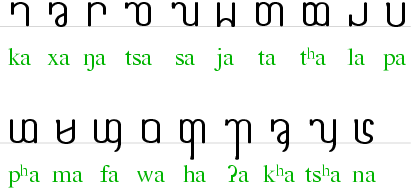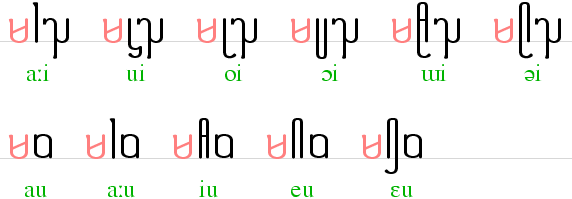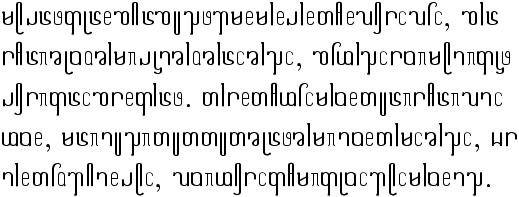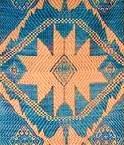The Dehong Dai script is used in China for the language of Tai Le or Tai Neua, a Tai language related to Thai and Lao. It is one of the languages spoken by the Dai peoples in China, especially in the Dehong Dai and Jingpo Autonomous Prefecture in the southwest of Yunnan province. Across the border in Myanmar, a different script is used for the very similar Tai Yai language.
Notable Features
- The vowels are printed in sequence, unlike the Indic manner used in other script systems of Southeast Asia.
- The vowel system is simpler than Thai, and without consonant clusters.
- Words are syllabic, and end in a vowel, or vowel+nasal, or vowel+stop.
- Each consonant has an inherent short /a/.
Consonants
This font is based on older forms of the glyphs, in particular /nga/, /ya/, /ma/ and /na/.
Vowels
Again, this font has some old-fashioned vowel forms. In particular, the /i/ has no cursive joiner, and the /u/ has the under-stroke joined.
Diphthongs are always final. The following diphthongs are written as vowel combinations, here shown with initial /m/ in red:
Tone marks
Tone marks have been used at the end of syllables since the early 1950s. At first, diacritic marks were used, as shown here upon a final /m/ in red. The voice contour is in green; unmarked syllables have middle tone (33):
Since 1988, letters have been used instead of diacritic marks:
Numerals
Three sets of numerals may be used: a form of Burmese (top), the Shan (bottom), or the arabic numerals of English.
Examples
1. This is an extract from 1Thessalonians (source missionary bible):
2. This passage (from the gospel of Luke?) illustrates the font outlined above:









